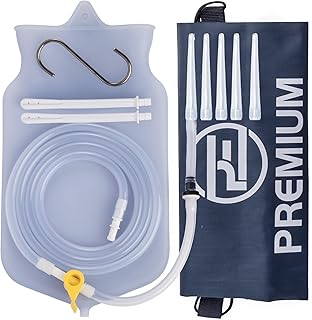5 important factors worth considering when looking for the best ice packs for injuries
When buying ice packs for injuries, it’s important to think about a few important things to make sure they work well in helping you heal. The size, shape, material, and durability of the ice pack all play important roles in giving you the right amount of relief and comfort. Choosing the right ice pack based on these factors can greatly affect how well it helps you heal and meets your needs. By understanding what’s important in choosing an ice pack, you can make your recovery process easier and faster.
See our guide to the best ice packs for injuries.
Size and shape of the ice pack
When choosing an ice pack for injuries, it’s important to think about its size and shape. Getting the right size ice pack for the specific area of the injury can make it work better. A big ice pack can cover a larger area, but it might be hard to use on smaller spots. On the other hand, a small ice pack is good for focusing on one spot, but it might not be enough for big injuries. So, it’s crucial to pick an ice pack that matches the size of the injury area to make sure it helps you feel better and heal properly.
Also, think about the shape of the ice pack when buying one. An ice pack that fits the shape of your body can give better coverage and make sure the cold therapy reaches the injury. Make sure the ice pack can bend and shape around joints or curved body parts for the best results. A well-fitted ice pack can cool the area more evenly, helping to reduce swelling and speed up the healing process. In the end, focusing on both the size and shape of the ice pack can really improve how well it helps you heal.
Duration of cold therapy
When using ice packs for injuries, it’s important to be cautious and informed about how long to apply cold therapy. While you might think that longer and colder sessions are better, it’s actually more complicated. Using cold therapy too much can harm your skin, nerves, or even cause frostbite. It’s crucial to find a balance between reducing inflammation and swelling and avoiding potential harm from being exposed to cold temperatures for too long.
Everyone’s body responds differently to cold therapy, so it’s important to pay attention to how your body is feeling and adjust the duration of icing accordingly. It’s best to start with short intervals, like 15-20 minutes, and see how your skin reacts before increasing the time if needed. By being moderate and mindful when using cold therapy, you can get its benefits without any unintended consequences.
Reusability and durability
When considering ice packs for injuries, it’s important to think about how often you can use them and how well they hold up over time. Some people prefer disposable ice packs for the convenience, but choosing reusable ones not only helps the environment, but also saves money in the long run. Investing in a durable ice pack that can be used multiple times reduces waste and ensures it will be effective in managing injuries for a long time.
A reusable ice pack is reliable and provides peace of mind for both immediate use and future injury needs. Durability is key when it comes to ice packs for injuries, as a well-made ice pack can keep providing relief for a longer period, aiding in the healing process. By choosing a durable ice pack, you can be confident that you have a dependable tool in your first aid kit that’s always ready to provide cold therapy when you need it.
Ultimately, selecting a reusable and durable ice pack benefits both you and the environment by managing injuries effectively and sustainably.
Ease of application and use
When buying ice packs for injuries, it’s important to consider how easy they are to use. The key to a good ice pack is how quickly and easily it can be applied to the injured area to provide relief and help the healing process. Choosing ice packs with features like flexible materials or secure straps can make a big difference in how well they work, especially for dealing with pain or swelling. Having clear instructions on how to use the ice pack properly can also make it easier to get the most benefits without any confusion.
The design and how easy an ice pack is to use can determine if it will help with injuries or just be frustrating. Choosing ice packs that are easy to use, whether for a sprained ankle or sore muscles, can really help with the recovery process. There are lots of options on the market, from gel packs that can be shaped easily to wrap-around styles, so there’s something for everyone. Making sure to prioritize ease of use when picking out an ice pack means people can focus on what’s important – their health and getting better quickly.
Safety and material of the ice pack
When choosing an ice pack for injuries, it is important to consider safety and the materials used. Some ice packs on the market contain harmful chemicals that can seep into your skin and cause unwanted side effects. To avoid any risks to your health, it is best to opt for ice packs made with non-toxic, BPA-free materials.
Choose an ice pack that is durable and leak-proof to ensure it will be effective and last a long time. A strong ice pack that can be used multiple times without breaking will save you money and provide consistent relief when needed. Look for ice packs made with high-quality, medical-grade materials to prevent any potential problems during use.
Prioritize your safety and health when selecting an ice pack for your injuries. Take the time to research and find the right ice pack for a quick and successful recovery.
Conclusion
Ice packs are known for helping with injuries by reducing pain and inflammation. Using cold therapy quickly and regularly can help you recover faster and decrease swelling from injuries. Ice packs are easy to use and can be helpful for athletes, active people, and anyone who needs relief from minor pains. Using ice packs as part of your injury care routine can speed up your healing process and help you feel better sooner.



